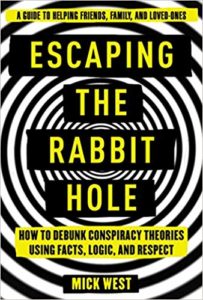 Gary Voorhis was a computer technician on the USS Princeton during the 2004 “Tic-Tac” UFO incident (commonly referred to as the “Nimitz Incident” after the aircraft carrier heading the strike group.) Gary first saw “UFOs” as slow-moving radar targets on the ship’s SPY-1B radar, which he helped maintain. He also saw lights in the direction of those targets. Initially, the radar targets were thought to be radar clutter (false targets) but after a couple of days, planes were sent out to take a look. Gary saw some video from that “interrogation” and remembers a longer and more impressive video than the one that was later leaked to the public. He thinks what he saw was some kind of advanced technology, possibly alien technology.
Gary Voorhis was a computer technician on the USS Princeton during the 2004 “Tic-Tac” UFO incident (commonly referred to as the “Nimitz Incident” after the aircraft carrier heading the strike group.) Gary first saw “UFOs” as slow-moving radar targets on the ship’s SPY-1B radar, which he helped maintain. He also saw lights in the direction of those targets. Initially, the radar targets were thought to be radar clutter (false targets) but after a couple of days, planes were sent out to take a look. Gary saw some video from that “interrogation” and remembers a longer and more impressive video than the one that was later leaked to the public. He thinks what he saw was some kind of advanced technology, possibly alien technology.
I think a more likely explanation is some kind of series of radar glitch and unrelated visual observations of some sort – all possibly confused in memory by the passage of time. We discuss our different interpretations and try to figure out how to resolve them.
Gary is also the Vice President of UAP Expeditions, a non-profit organization set up by a group of former servicemen from the Nimitz Incident, along with other interested parties. The mission of UAP Expeditions is to provide a free public service field-testing UAP (UFO) related technologies. We chat briefly about that mission, and how they plan to return to the region of the original 2004 sighting to see if they can observe something again.
- USS Nimitz UFO Incident (Wikipedia)
- Gary on Twitter
- 2004 Nimitz Incident on Metabunk
- UAP Expeditions on Facebook
Podcast: Play in new window | Download
Subscribe: Apple Podcasts | Google Podcasts | Spotify | iHeartRadio | Email | TuneIn | RSS | More



Mick, I really appreciate your treatment of the Nimitz incident. When I first learned of it after watching the History Channel show, my first thought was to look for someone taking a skeptical approach to the event, and to see if there were any mundane explanations. I found your initial YouTube videos, and concluded, “Ah, it was typical History Channel hyperbole.”
I have to say, though, the more I dug into it, the less sure I was of banal explanations. I’m still intrigued, and there’s still many questions to be answered.
If I were a betting man, I’d put my money on secret US military tech that wasn’t suppose to bump into the Navy. Not a perfect fit at all, but seems more likely than so many Navy personnel being mistaken about what would have been relatively common phenomena/limitations inherent with their technology and observational capabilities. In other words, I would think the explanations you have suggested would be things these men would also have immediately considered (and it seems rejected) at the time of the event.
Thank you for your great work!